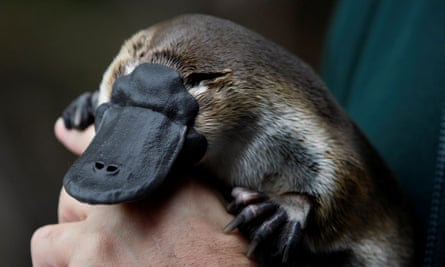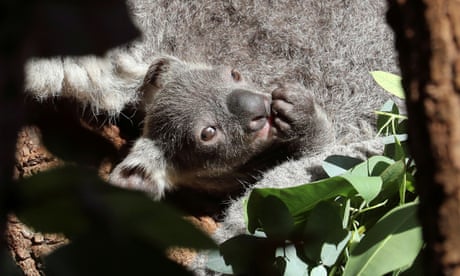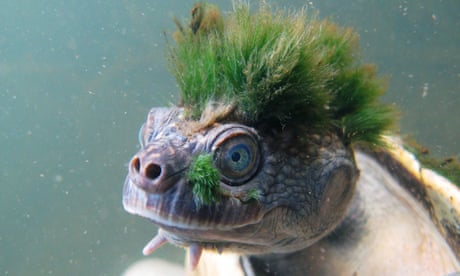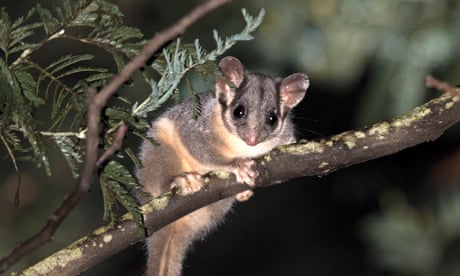Extract from The Guardian
Scientists and conservationists say mammal should be officially listed as nationally threatened species.

Last modified on Mon 23 Nov 2020 03.33 AEDT
The amount of platypus habitat in Australia has shrunk by 22% in 30 years and the animal should now be listed as a nationally threatened species, according to new research.
Scientists from the University of New South Wales, along with three of Australia’s largest environmental organisations – the Australian Conservation Foundation, WWF-Australia and Humane Society International Australia – have jointly nominated the platypus for an official listing as vulnerable under national environmental laws.
The group has also nominated the platypus for the same status under NSW laws after research found severe declines in platypus records in that state.
The platypus is an elusive animal and a lack of long-term monitoring studies has made it difficult to quantify declines in populations.
The scientists compiled all available data and records of the platypus to examine changes in both its distribution and occurrence, concluding that it meets the criteria for a vulnerable listing under the Environment Protection and Biodiversity Conservation Act.
Their research found that since 1990, the amount of platypus habitat in Australia had declined by 199,919 square kilometres – or 22.6% – which is an area almost three times the size of Tasmania.
The sharpest declines by state were in NSW and Queensland, which respectively recorded a 32% and a 27% reduction in the areas occupied by platypuses.
“In terms of the biggest causes for these declines, the big concern is they haven’t really ceased and appear to be ongoing and even getting worse,” said Tahneal Hawke, an ecologist at the UNSW and one of the lead researchers.
“We’re expecting the declines will continue.”
The biggest threats to the platypus are land-clearing, regulation of rivers and drought.
Hawke said in addition to listing the species as vulnerable, governments needed to address these threats and invest in actions for species recovery.
In the Murray-Darling Basin, the study found a 30.6% decline in platypus records over the past 30 years. In some urban catchments near Melbourne, the declines were as high as 65%.
In Victoria, the state’s scientific advisory panel recently recommended an official listing of vulnerable for the platypus and the state government will decide within the next two months whether to endorse that listing.
“Protecting the platypus and the rivers it relies on must be a national priority for one of the world’s most iconic animals,” said Richard Kingsford, another lead author of the report and the director of the Centre for Ecosystem Science at the UNSW.
“There is a real concern that platypus populations will disappear from some of our rivers without returning if rivers keep degrading with droughts and dams.”
When a species is nominated for a national listing, it is up to the threatened species scientific committee and the government to decide whether it should be assessed.
The nomination of the platypus comes as a Senate inquiry prepares to hold a one-day hearing on Monday into a bill to change Australia’s national environment laws and clear the way for the transfer of federal approval powers to the states and territories.
The inquiry has been labelled a “sham” and “bogus” by Labor and the Greens, who had called for thorough examination of the government’s bill by a Senate committee.
Instead, the government agreed to a two-week inquiry that will report back next week as the Senate prepares to debate the legislation.
In a submission to the inquiry, the Australian Conservation Foundation said the government’s bill does nothing to address the “fundamental failures” in Australia’s environmental laws that were identified in an interim report from a review of the act.
The review’s chair, Graeme Samuel, handed his final report to the government last month but it has not yet been released.
“The legislation before the Senate does not address any of the key failings in our environmental law. Rather it exacerbates them,” the ACF’s submission states.
The ACF has written to the inquiry to say government records show the bill before parliament was initiated before any findings were made by the independent review and the legislation was “a predetermined outcome of the government”.
Guardian Australia has previously reported the government began preparing the bill in June before it received Samuel’s interim report.
Freedom of information documents show the prime minister, Scott Morrison, told the WA premier, Mark McGowan, in February he wanted to introduce a bill to transfer environmental approval powers to state governments by mid-year.
“For this reason alone, the bill should be abandoned, and a more fulsome legislative response addressing the serious issues in relation to the EPBC Act be developed,” the submission states.
The government has said its support for “streamlining regulation” was well known and the proposed changes to the law currently before the parliament had remained government policy since the Abbott government’s one-stop shop legislation was voted down in 2014.



No comments:
Post a Comment